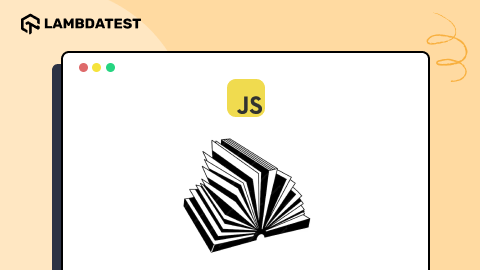17 Best Programming Languages For Test Automation In 2025
Sonu Kumar Deo
Posted On: February 10, 2025
![]() 233295 Views
233295 Views
![]() 25 Min Read
25 Min Read
In today’s highly competitive market, software development and automation testing are critical in creating high-quality software applications for enterprises. Many enterprises are replacing the traditional manual testing mode with a hybrid mode inclined towards automation testing.
Automation testing is less labor-intensive, more efficient, accurate, and scalable than manual testing. It also provides greater performance and lower operation costs.
Automation testing mainly involves writing and executing test scripts using various automation tools and frameworks. However, testers must get their hands dirty with at least one programming language to write test scripts. Depending on the project, one or multiple programming languages can be used to write test scripts.
This article will help you select the right test automation language you should start with by highlighting the 17 best programming languages for test automation in 2025. So, let’s get started.
If you’re new to Selenium and wondering what it is, we recommend checking out our guide – What is Selenium?
TABLE OF CONTENTS
1. Python

Python is an open-source and free-to-use programming language that is notably well-suited for automation testing, artificial intelligence, and many more. It offers multiple frameworks for unit testing, end-to-end testing, and integration testing that are frequently used in automation testing. It is considered one of the best test automation languages because of its ease of use. It is relatively easy to learn and highly flexible, making it easy to connect different code snippets and libraries to achieve specific testing goals.
Python is considered one of the best test automation languages because of the features that it brings to the table.
Here are some of the most important features of Python:
- The syntax of Python is very easy to understand. Hence, it is considered one of the best test automation languages for beginners.
- Python supports vast libraries that simplify the developer’s life by facilitating various functionalities without much coding.
- Python has strong open-source community support.
- Python has lots of automation testing frameworks that make the task of automation testing easy. Pytest and PyUnit are the most commonly used Python automation testing frameworks that are mainly used to perform cross browser testing and parallel testing.
- Python easily integrates with the most commonly used automation testing tools like Selenium and Appium using Python libraries.
You may check out the blog on Master Web Automation With Python Selenium On Chrome.
You can subscribe to the LambdaTest YouTube Channel for more tutorials on Selenium testing, Playwright testing, Cypress testing, and more. LambdaTest is an AI-native test orchestration and execution platform that lets you run manual and automated tests at scale on over 3000 real devices , browsers, and OS combinations.
2. Java
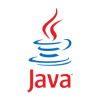
Java, owned by Oracle Corporation, is a general-purpose programming language that many large organizations use. Java is based on the principle of OOPS (Object-oriented programming) and is widely used for automation testing.
Over 10 million developers and testers use Java, running on 56 billion devices globally. It is one of the best test automation languages for cross browser and parallel testing because of its features like multithreading, platform-independent behavior, and easy integration with testing frameworks.
Here are some of the most important features of Java:
- Java is platform-independent and follows the principle of WORA (Write Once, Run Anywhere); it makes test scripts written in Java platform-independent, increasing test coverage.
- Many open-source automated testing frameworks based on Java, like JUnit and TestNG, have been created. They make automated testing easy by providing many inbuilt features and methods.
- Java’s stack allocation system smooths integration with Selenium WebDriver, a commonly used tool for automation testing.
- Java supports multithreading and thus makes cross browser testing and parallel testing easier.
3. JavaScript

JavaScript, abbreviated JS, is a scripting language used for dynamic reading, updating, and validating web elements and contents. According to the StackOverflow developer survey 2023, JavaScript is the most commonly used programming language and is used by ~63% of developers.
One of the primary reasons for its dominance among test automation languages could be the wider adoption of shift-left testing methodologies where developers are also involved in test code development. In shift-left methodology, the QA team collaborates closely with the development team to develop efficient test automation implementation.
JavaScript is one of the preferred test automation languages because of its advantages and features.
Here are some of the most important features of JavaScript:
- Developers can use JavaScript and Selenium concurrently to develop test scenarios for automated testing. This reduces the testing time as test scenarios are created only at the time of development.
- Multiple JavaScript frameworks exist for end-to-end testing and unit testing, such as Mocha, Jest, Jasmine, Nightwatch JS, Protractor, etc.
4. TypeScript

TypeScript is a superset of JavaScript that eventually compiles to a plain JavaScript code. It is statically typed and has additional features that enhance JavaScript development. This makes it a popular choice for large-scale web applications. It provides strong data type checking, improving the maintainability of gigantic codebases.
TypeScript is a commonly used test automation language in front-end automation testing frameworks. For example, Protractor, a popular testing framework for Angular, is built with TypeScript. Moreover, TypeScript’s static typing allows catching errors at compile time, reducing runtime errors during test execution.
Some popular automation testing frameworks like Cypress and TestCafe also provide native support for the TypeScript language. This allows automation testers to create test scripts using TypeScript syntax.
Here are some of the most important features of TypeScript:
- Supports both client-side and server-side development.
- Offers full object-oriented features like classes, interfaces, inheritance, encapsulation, and modules.
- Supports all JavaScript elements, enabling seamless integration of existing code, frameworks, tools, and libraries for a versatile development experience.
- Facilitates Document Object Model (DOM) manipulation, enabling the addition or removal of elements, akin to JavaScript functionality.
- Strong static typing in TypeScript enhances testing by catching potential errors during compilation, promoting code reliability and reducing runtime issues.
5. C#
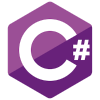
C#, created by Microsoft, is an object-oriented programming language well-suited for applications based on Android, iOS, and Windows platforms. This language is gradually picking up pace as a test automation language. Many testers favor C# because of its compatibility with Selenium WebDriver.
Many test automation frameworks are based on C# like xUnit.Net, MSTest, and NUnit. These frameworks allow automation, cross-border testing, unit testing, functional testing, and cross-browser testing with C#.
Testers can use the POM (Page Object Model) design pattern in C# to increase the efficiency and maintainability of the test scripts.
Here are some of the most important features of C#:
- The program compilation and run time in C# is very fast. This allows testers and developers to write scripts that involve complex calculations and require faster response time.
- C# incorporates automatic memory management through garbage collection. This feature helps developers avoid memory leaks and enhances overall application stability by automatically reclaiming unused memory.
- C# supports robust testing with frameworks like NUnit and MSTest, offering a rich ecosystem for unit testing, test-driven development, and automated testing frameworks.
6. Ruby

Ruby is another programming language for test automation that is gaining momentum in the arena of test automation and automated browser testing. It is open-source in nature and is focused on simplicity & productivity. Like Python, Ruby is also easy to learn and implement. Human-friendly syntax and flexible object-oriented architecture make Ruby a powerful programming language.
Another interesting aspect is Ruby is the support of the growing community of Ruby users who are considered to be the most important strengths of the language. It is slowly becoming a preferred programming language for creating web applications. Developers can build useful applications with Ruby using much fewer lines of code.
Selenium framework also works with Ruby language; hence, it can be used for Selenium automation testing. Getting started with Ruby and Selenium is not challenging, and you can execute the first cross-browser test with Selenium WebDriver & Ruby with very few lines of code.
Several test automation frameworks in Ruby help in cross browser testing. Below are the most popular testing frameworks in Ruby:
- Capybara
- RSpec
- Test::Unit
Here are some of the most important features of Ruby:
- It uses dynamic typing, which means that the variable types are decided upon at runtime. This makes code development simpler and more flexible.
- It is purely an object-oriented programming language. Every value is an object. Every object has a class, and every class has a superclass.
- It has automatic memory management through a garbage collector, which helps developers focus on coding without worrying about manual memory allocation and deallocation.
- It allows modifying or adding methods to existing classes during runtime. This flexibility is useful for extending or modifying the behavior of built-in classes.
- It supports mixins, which share behavior between classes. This is achieved using modules, which can be included in multiple classes, providing a form of multiple inheritance.
- It follows the principle of duck typing, which means that the type or class of an object is less important than the methods it responds to. This promotes flexibility and code reusability.
- It allows writing code that can modify its own structure and behavior. This feature is powerful for creating DSLs (Domain-Specific Languages) and flexible frameworks.
NOTE: Start your free Ruby automation testing today! And check out LambdaTest’s support doc to Run Your First Ruby Automation Scripts On A Selenium Grid.
7. PHP
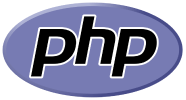
PHP is a server-side scripting language used for web development. However, it is also well utilized as a programming language for test automation. If you are getting started with programming, you should have a go at PHP. The difficulty level of PHP is low when compared to other backend programming languages like Python and Java.
PHP has good community support and a growing ecosystem. It offers XDebug, a powerful debugging and profiling tool that has powerful capabilities. It has support for a good number of test automation frameworks like:
- Laravel Dusk
- Codeception
- PHPUnit
- BeHat
Here are some of the most important features of PHP:
- It is platform-independent and can run on various operating systems, including Windows, Linux, macOS.
- It is an interpreted language, hence there is no requirement for compilation. Interpreters step through a program line by line, executing the code. Interpreters execute source code, so the code is platform-independent.
- It can be easily integrated with popular web servers like Apache and Nginx. It is often used as a module or through CGI (Common Gateway Interface).
- It has a vast ecosystem of libraries and extensions that simplify common tasks, ranging from handling image processing to interacting with APIs. The PHP Extension and Application Repository (PEAR) and Composer are tools for managing dependencies in PHP projects.
- It includes security features like built-in support for handling forms and cookies.
- It demonstrates efficient memory management with the help of session management and reduces unnecessary memory allocations.
NOTE: Check out LambdaTest’s support doc to Run Your First PHP Automation Scripts On Selenium Grid.
 Note
NoteAutomate your tests using Selenium based Cloud Grid on 3000+ real browsers and devices combinations using Python, Java, JavaScript, TypeScript, C#, Ruby, and PHP. Try LambdaTest Today!
8. Smashtest

Smashtest is an open-source programming language used to create the fastest automation tests. It speeds up the test execution by creating test scripts in a tree-like structure.
It can perform both UI and API testing. It has an in-built test runner that enables parallel testing and a read–eval–print loop (REPL). It also supports mocking API that allows mocking geo-location and time for testing. Smashtest CLI (Command-Line Interface) has tools for CI/CD pipeline and REPL interpreter.
Here are some of the most important features of Smashtest:
- It provides in-built, real-time test reports with auto-generated screenshots for the passed/failed status of the test.
- It enables super-fast automation up to 10X faster than any other test automation language.
- It allows running multiple test cases parallelly.
- It is very easy to understand and has human-readable steps.
9. Golang

Golang, commonly called Go, is a statically typed programming language created by Google. It is built to emphasize performance simplicity, performance, and concurrency, making it appropriate for building and testing efficient and scalable applications.
Golang is gaining popularity among test automation languages for its ability to create efficient and robust tests. The language’s simplicity leads to developing maintainable and clean test scripts. Its in-built concurrency components, such as channels and goroutines, make parallel testing easier and more efficient.
Ginkgo and GoConvey are popular testing frameworks in the Golang ecosystem. Ginkgo provides a BDD-style testing framework with expressive syntax, while GoConvey offers a domain-specific language for concisely expressing test cases and assertions. These frameworks, combined with the power of Go, enable testers to build scalable and reliable automation testing solutions.
Here are some of the most important features of Golang:
- Provides centralized dependency services, promoting clear and transparent dependency management through source code repositories like GitHub.
- Explicit error handling encourages robust error checks, promoting clear test assertions and making it easier to identify and handle potential issues.
- Native support for concurrency allows testers to parallelize test execution efficiently, enhancing speed and resource utilization in testing suites.
10. VBScript

Developed by Microsoft, VBScript (Visual Basic Script) is a general-purpose lightweight scripting language built on top of Visual Basic. It was primarily designed for Windows environments, enabling automation and scripting tasks within the Windows operating system. Quick Test Professional (QTP), a test automation tool, now uses VBScript as its primary scripting language.
VBScript is also used in the Microsoft WSH (Windows Script Host) (previously known as Windows Scripting Host) to automate Windows desktop applications.
Here are some of the most important features of VBScript:
- Integrates with Microsoft technologies, particularly in web development using Active Server Pages (ASP) and client-side scripting within Internet Explorer. It offers access to Windows Script Host (WSH) for system administration tasks.
- VBScript uses a variant data type, allowing variables to hold different types of data. While flexible, this dynamic typing requires careful handling to prevent unintended conversions, impacting type safety in larger codebases.
11. Kotlin

Kotlin, developed by Google, is a modern programming language fully compatible with Java and runs on the Java Virtual Machine (JVM). It blends functional and object-oriented programming paradigms, providing shorter syntax, null safety, and better readability than Java.
Kotlin was initially developed to make Android app development easy; however, it is now used in automation testing for Android apps developed in Kotlin. Kotlin’s syntax is compact and clear, which saves boilerplate code and enhances readability. Null safety is also supported in Kotlin, which prevents null pointer errors and makes the code more robust. Kotlin is completely compatible with Java and can work with existing Java frameworks and libraries. This means software development company can test their Java code in Kotlin or create tests entirely in Kotlin. Kotlin provides native support for the development of Android and can use its features and tools.
Kotlin provides lots of testing libraries and frameworks to assist you in testing many areas of your mobile applications, including performance, UI, functionality, security, and more. Espresso for writing and running UI tests on Android devices or emulators, MockK for simulating and verifying dependencies in your tests, and Robolectric to execute Android tests on the JVM without a real device or an emulator are some notable examples.
Here are some of the most important features of Kotlin:
- It runs on JVM and also supports Java libraries and tools.
- By default, the Kotlin compiler does not let any type variable have a null value at compile time.
- Kotlin Native is a tool to compile Kotlin code into native binaries that can run without relying on a virtual machine. This way Kotlin code can directly run on any system without requiring any additional runtime or virtual machine.
By now you can see that knowledge of object-oriented programming is important learn more in oops interview questions guide where 100+ QnA have been covered you’ll surely get in depth knowledge of oops.
12. Rust
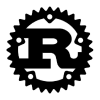
Rust, a systems programming language, is renowned for focusing on concurrency, efficiency, and safety. Because it offers memory safety without compromising speed, it’s a dependable option for developing low-level tools and components for automated testing frameworks.
Rust is used to create strong and efficient testing frameworks and libraries. Memory safety features such as ownership and borrowing aid in preventing common programming problems such as null pointer dereferences and data races.
Rust’s strong static typing and expressive syntax make it ideal for constructing high-reliability tools such as custom test harnesses, result parsers, and performance profiling utilities. Cargo, Rust’s ecosystem and package manager, can be used by testers and developers to create efficient and secure automation testing solutions.
Here are some of the most important features of Rust:
- Rust’s type inference automatically determines the type of expressions, promoting concise code without explicit type annotations, and enhancing code readability and maintainability.
- Rust provides an ownership system for multiple threads running at the same time. Ownership restricts write access, preventing multiple threads from owning the same variable concurrently.
13. Swift
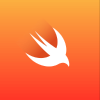
Swift is a powerful, user-friendly programming language primarily used for building apps for all Apple devices. Swift is simple to learn and use, with modern features and a concise yet expressive syntax you’ll appreciate. Swift code is designed to be safe and provides software that runs at breakneck speed.
In automation testing, Swift is primarily used for automating iOS apps on iOS simulators and real devices. Swift can be used to write automated testers in one of the popular frameworks XCUITest, the native testing framework provided by Apple. XCUITest provides robust features to perform performance testing, UI testing, and unit testing. This allows automation testers to validate the behavior and functionality of iOS apps.
Swift can also be used with cross-platform testing platforms like Appium. Appium along with Swift is one of the key test automation languages that can be used to create tests that can run on Android, iOS, and web applications.
Here are some of the most important features of Swift:
- Swift is a versatile, modern language suitable for diverse application development—ranging from mobile apps to desktop software, and cloud services.
- Swift prioritizes error handling by proactively catching mistakes before deployment. It promotes clarity, making the safest coding practices the most intuitive and straightforward.
- Swift delivers both runtime speed and efficient development. It matches the performance of C-based languages while maintaining a developer-friendly environment, ensuring predictability and consistency.
14. Perl

Perl is a popular and powerful scripting language for software development and automation. It is known for its speed, flexibility, and a rich library of modules. It borrows many features from Shell script and C programming language and is used for system networking, administration, and other applications involving user interfaces.
In automation testing, Perl excels as one of the key test automation languages at swiftly handling diverse tasks. Its concise syntax and regular expression support make it adept at processing and manipulating text, a valuable asset for parsing test results. Testers often leverage Perl for tasks like log analysis, data extraction, and quick scripting needs. With its widespread use in system administration and automation, Perl remains reliable for crafting efficient automation testing scripts and utilities, particularly in scenarios where rapid development and effective text processing capabilities are paramount.
Here are some of the most important features of Perl:
- Perl seamlessly supports object-oriented, procedural, and functional programming, providing flexibility for diverse coding approaches and styles.
- With over 25,000 open-source modules from CPAN, Perl is easily extendable, offering a vast ecosystem of tools and libraries.
- Renowned for powerful text manipulation capabilities, Perl excels in processing and manipulating HTML, XML, and various mark-up languages.
 Note
NoteSimplify Testing: Opt for LambdaTest’s Selenium Cloud Grid with 3000+ real browsers and OS options. Try LambdaTest Today!
15. XML
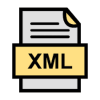
XML, stands for Extensible Markup Language, is a markup language that defines rules for encoding documents in human-readable and machine-readable formats. It was designed to store and transport data, making it a versatile choice for various applications and industries.
In automation testing, XML is primarily used to write configurations and setup instructions for various automation testing frameworks. These files define parameters such as test suite details, browser configurations, and other settings.
For instance, TestNG, a Java-based testing framework, must be configured through an XML file “TestNG.xml” to create and handle multiple test classes and define test suites and tests.
Xml2selenium, a plugin for controlling and creating automated tests, provides XML-based language for UI test development.
Here are some of the most important features of XML:
- XML separates data from HTML, allowing dynamic content updates without modifying HTML. JavaScript can effortlessly read external XML files, ensuring efficient data presentation and layout maintenance.
- Exchanging data between incompatible systems is complex. XML simplifies this process, reducing challenges in data exchange over the Internet. Its standardized format enables seamless communication across diverse applications.
16. Groovy
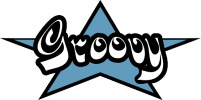
Groovy is a scripting language that runs on the JVM (Java Virtual Machine), which makes it extremely compatible with Java tools and frameworks. It has syntax similar to Java but adds features like closures and dynamic typing to increase productivity and flexibility.
Groovy is frequently used in popular testing frameworks such as Geb and Spock in the context of automation testing. Geb is a robust web automation testing framework that uses Groovy’s expressive syntax to produce test scripts that are concise yet readable. It provides a domain-specific language for web testing, enabling testers to construct tests simply and easily. Geb’s compatibility with most browsers and ability to interact with website elements make it a handy tool for developers and testers.
Here are some of the most important features of Groovy:
- Dynamic typing allows developers or testers to write code without explicitly declaring the data types. This makes the code easier to read and more concise.
- Groovy allows developers to add new functions to an existing class without modifying its source code. This feature is known as extension methods.
17. PowerShell
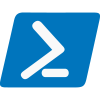
Microsoft PowerShell is a task configuration and automation management framework. It includes a scripting language and command-line shell developed for Windows system administration and automation. PowerShell is a versatile tool for automation jobs since it has many features and integration capabilities.
PowerShell can be used to automate different components of the testing process in Windows-based settings in the context of automation testing. Testers can use PowerShell to execute activities including test environment setup, test data preparation, and test execution.
The scripting capabilities of PowerShell allow testers to automate repetitive operations, interface with external systems and APIs, and conduct data-driven testing. Its seamless interaction with Microsoft technologies such as Active Directory, Windows Management Instrumentation (WMI), and others provides great control and flexibility for automation testing.
PowerShell can also run test scripts in other test automation languages or frameworks. PowerShell scripts, for example, can be used by testers to start and supervise automated tests developed using Selenium WebDriver and other testing frameworks.
Here are some of the most important features of PowerShell:
- PowerShell provides a unified command-line interface in Windows that unifies various system components. Users can perform a wide range of tasks (deleting storage files, writing new files, and other system-level activities) using consistent commands, enhancing ease of use and reducing the learning curve.
- As a robust scripting language, PowerShell allows users to create complex scripts for automation.
Conclusion
There is a wide range of programming languages available to automate testing today, each catering to specific needs and preferences. The languages listed are the most popular for automation testing since they enable many automation testing structures and have a large client base. Any of these test automation languages can be used to get started with automation testing.
As the automation testing landscape evolves, staying informed about the unique features and advantages of each language becomes paramount. Whether it’s Python’s ease of use, C#’s Windows integration, or Ruby’s simplicity, testers have an array of options to cater to their specific automation needs in 2025.
Frequently Asked Questions (FAQs)
What are the best programming languages for test automation in 2025?
In 2025, some of the best programming languages for test automation include Python, Java, JavaScript, TypeScript, C#, Ruby, PHP, SmashTest, Golang, VBScript, Kotlin, Rust, Swift, Perl, XML, Groovy, and Powershell. These languages offer diverse features and capabilities for various automation testing needs.
Why is Python considered one of the best test automation languages?
Python is considered one of the best test automation languages due to its easy-to-understand syntax, extensive library support, strong open-source community, and compatibility with popular automation testing tools like Selenium and Appium. Python also offers frameworks like Pytest and PyUnit for efficient automation testing.
What advantages does JavaScript bring to automation testing?
JavaScript is widely adopted in automation testing due to its compatibility with Selenium, its concurrent use for test scenario development, and its support for various testing frameworks such as Mocha, Jest, Jasmine, Nightwatch JS, and Protractor. Its prevalence in shift-left testing methodologies enhances collaboration between development and QA teams.
Why is TypeScript gaining popularity in test automation?
TypeScript, a superset of JavaScript, is gaining popularity in test automation for its static typing, which enhances code maintainability in large-scale web applications. Automation testing frameworks like Cypress and TestCafe provide native support for TypeScript, reducing runtime errors during test execution.
How does C# contribute to test automation?
C#, developed by Microsoft, is favored for test automation due to its compatibility with Selenium WebDriver. It supports various test automation frameworks like xUnit.Net, MSTest, and NUnit, enabling cross-browser testing, unit testing, functional testing, and more. The Page Object Model (POM) design pattern enhances the efficiency and maintainability of test scripts in C#.
Why is Ruby gaining momentum in test automation?
Ruby is gaining momentum in test automation due to its simplicity, productivity, and support from a growing community. Its human-friendly syntax and flexible object-oriented architecture make it easy to learn and implement. Ruby works seamlessly with Selenium for automation testing, and popular frameworks like Capybara and RSpec support cross-browser testing.
Got Questions? Drop them on LambdaTest Community. Visit now










